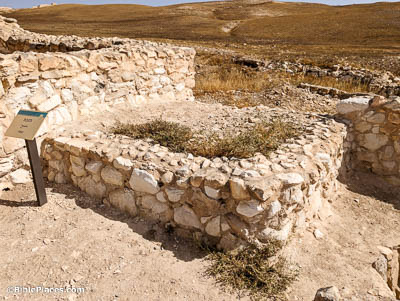Moses wrote down all the words of Yahweh (Exodus 24:4)
This Egyptian graywacke statue of a scribe portrays him writing on a partly unrolled papyrus scroll. The obvious choice for Moses would have been to write on a papyrus roll that had been brought out from Egypt. This image comes from the Detroit Institute of Arts and is in the public domain.





